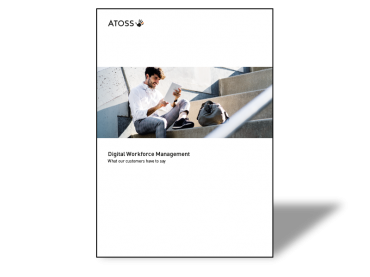The technological evolution of workforce management
In the 21st century, artificial intelligence ranks as one of the major technology trends - also when it comes to the optimization of business software. Our Executive Director Product Management Markus Wieser explains why this hype represents a great opportunity for workforce management.
Mr. Wieser, what can artificial intelligence do that humans cannot?
Actually, artificial intelligence can do a lot less than humans. Significantly less because AI (only) solves concrete application problems, imitating intelligent behavior and learning independently in this context. In so-called machine learning, AI is fed with vast amounts of data and thereby recognizes patterns and regularities in the learning data. In this manner, AI can also evaluate new, unknown data. Over time, AI becomes better and better and can therefore take on tasks faster and better than humans would be able to do manually. This creates a completely new type of business software.
What are the concrete advantages for workforce management?
There tremendous advantage to be tapped here. I would like to highlight one because it is of particular significance for digital natives. I can talk to the system via natural language user interfaces in the same way that I can speak with my supervisor. Instead of filling out a form or engaging in a lengthy conversation or correspondence, I could say briefly and concisely: 'I would like to take a vacation next week from Wednesday to Friday'. The system recognizes my intention and completes the request fully automatically, so to speak. At first glance, this looks like simple speech recognition.
But if you take a closer look, it is a great deal more than that. If you regularly feed the system with common expressions for a vacation request, which can differ from person to person and from country to country, it usually understands immediately what the employee wants. The result is the "Siri" or "Alexa" for workforce management, relieving superiors and HR officers of time-consuming routine tasks.

You want to learn more about digital workforce management? HERE you can go to our website
Is this still a dream of the future or already reality?
We are currently working flat out on this project and expect to see the first results this year. I would like to mention another example where AI is playing a role. The system recognizes which interaction the user regularly performs and proactively makes a suggestion to perform a certain action. Here’s an example from the retail trade: The sales employee of a branch office comes to his workplace and is greeted by his app with the question: "Would you like to clock in now?” We are also working hard on such interactions tailored to specific use cases in order to consistently improve the user experience involved. These development ideas very often come from our customers, who experience their particular "pain points" every day.
Are there other areas besides user interaction where AI can step in?
Yes, in automatic duty roster generation, for example. With the help of AI, the software recognizes manual corrections in the duty schedule. It learns from them, optimizes itself so to speak, and produces an even better duty roster the next time. But AI can also detect anomalies in the data when determining staffing requirements, and can determine a highly precise staffing requirements forecast based on historical customer footfall or retail sales at the touch of a button. This are still dreams of the future today. But the very idea of being able to create an almost magical workforce management system is what is driving us in the "Roaring Twenties".



